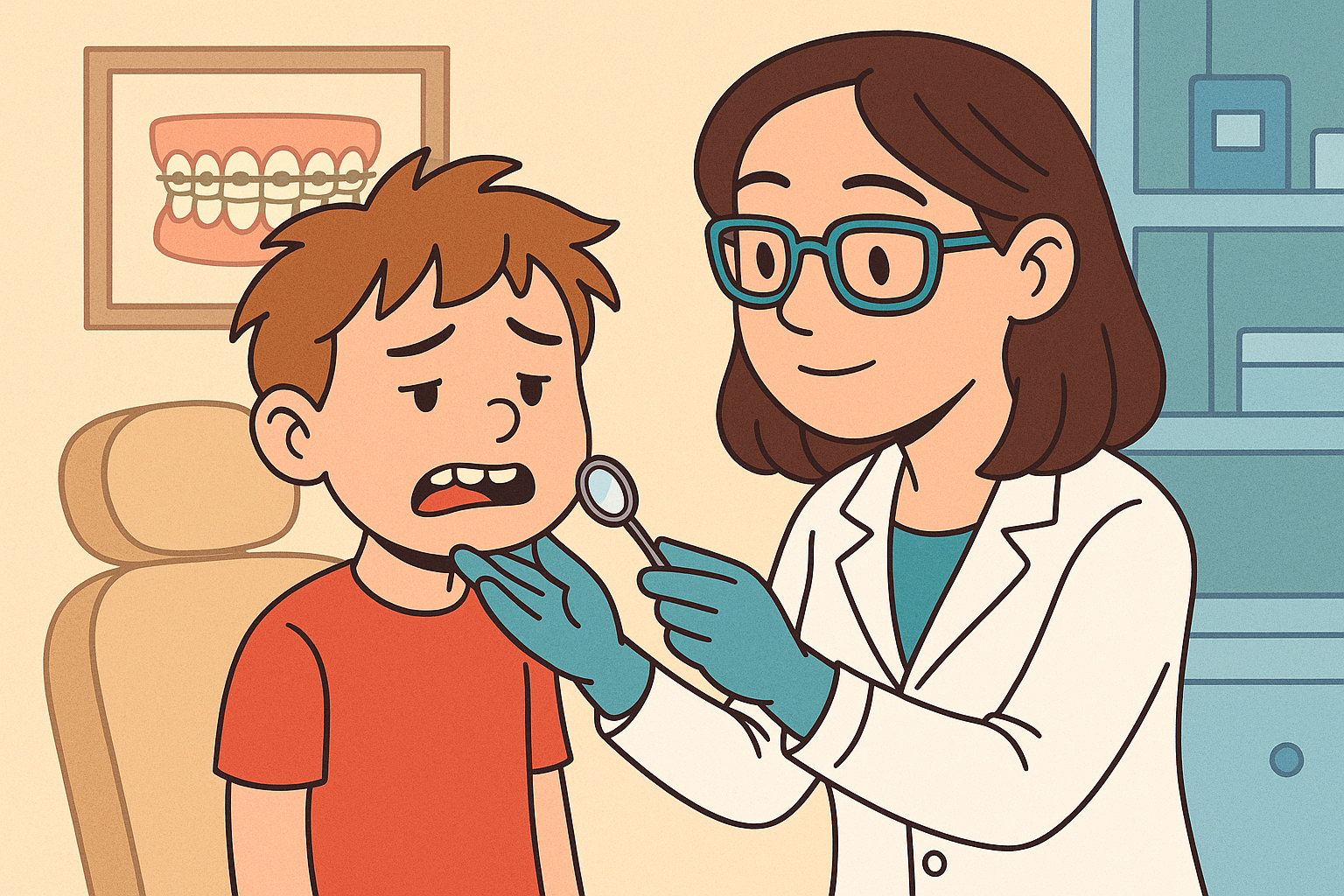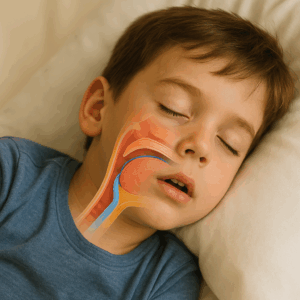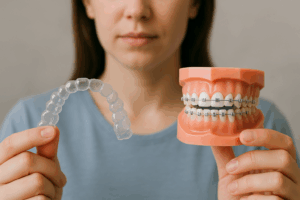Every parent wants their child to grow up healthy, confident, and thriving. But some warning signs that indicate a need for orthodontic intervention can be easy to miss or dismiss as normal childhood behaviors. Understanding these early indicators can make the difference between simple preventive treatment and more complex interventions later on.
The connection between orthodontic health and overall well-being goes far deeper than straight teeth. Modern airway-focused orthodontics recognizes that jaw development affects breathing, sleep quality, and even cognitive function. When parents in Metairie know what to look for, they can help their children avoid years of struggles with sleep, concentration, and overall health.
Observable Signs That Signal Orthodontic Issues
Children often communicate their orthodontic needs through behaviors rather than words. These physical signs and habits frequently indicate underlying developmental issues that benefit from early attention.
Sleep-Related Warning Signs
Sleep disturbances offer some of the clearest indicators that your child may need orthodontic evaluation. Children who snore regularly, breathe through their mouth during sleep, or experience restless nights may be struggling with airway restrictions. Parents often notice their child waking up tired despite adequate sleep time, which can signal that poor jaw positioning is affecting their breathing quality.
Bedwetting beyond the typical age, sleep talking, or sleepwalking can also connect to orthodontic issues. These behaviors may indicate that your child’s airway becomes compromised during sleep, causing frequent awakenings that disrupt normal sleep cycles.
Daily Behavioral Indicators
During waking hours, mouth breathing presents one of the most significant red flags. Children who consistently breathe through their mouth rather than their nose may have developed this pattern due to airway restrictions. This habit can affect facial development and create a cycle where jaw positioning continues to worsen over time.
Teeth grinding, known as bruxism, often indicates that your child’s bite doesn’t align properly. The jaw muscles work harder to find a comfortable position, leading to nighttime grinding that can damage teeth and cause jaw pain. Parents might notice worn tooth surfaces or hear grinding sounds during sleep.
Difficulty focusing, mood swings, or behavioral challenges at school sometimes connect to poor sleep quality caused by airway issues. When children can’t breathe properly during sleep, they don’t get the restorative rest needed for optimal cognitive function and emotional regulation.
Physical Signs to Monitor
Crowded or crooked teeth provide obvious visual cues, but other physical signs prove equally important. A small or narrow jaw may indicate that there isn’t adequate space for proper tooth alignment or optimal airway function. Parents might notice dark spaces between the cheeks and back teeth when their child smiles, which can signal a narrow palatal arch.
Frequent headaches or jaw pain in children shouldn’t be dismissed as normal growing pains. These symptoms often indicate that the jaw joints aren’t functioning properly due to misalignment or developmental issues.
The Critical Connection Between Airways and Orthodontics
Understanding airway-focused orthodontics helps parents recognize why early intervention matters so much. Traditional orthodontics focused primarily on straightening teeth, but modern approaches recognize that jaw development affects the entire respiratory system.
How Jaw Development Affects Breathing
The position and size of your child’s jaws directly impact their airway space. When jaws are too narrow or positioned incorrectly, the tongue doesn’t have adequate room to rest in its proper position. This can lead to mouth breathing, sleep disruptions, and a cascade of health issues that extend far beyond dental concerns.
Proper jaw development creates sufficient space for the tongue to rest against the palate, which naturally keeps the airway open during sleep. When this space is restricted, children may develop compensatory breathing patterns that affect their overall health and development.
Whole-Body Health Impacts
The effects of compromised airways extend throughout your child’s body. Poor sleep quality affects growth hormone production, immune system function, and cognitive development. Children with untreated airway issues may struggle with concentration, experience frequent illnesses, or show signs of attention difficulties that could be misattributed to other causes.
Some children develop digestive issues when mouth breathing affects their ability to chew and swallow properly. The connection between oral development and overall health demonstrates why early orthodontic intervention can have such profound impacts on your child’s quality of life.
Why the Age 7 Evaluation Matters
The American Association of Orthodontists recommends that children receive their first orthodontic evaluation by age 7, and this timing isn’t arbitrary. Understanding the critical window for jaw development helps explain why early intervention can be so much more effective than waiting.
The 80% Rule of Jaw Growth
Research shows that 80% of jaw growth occurs by age 7. This means that waiting until all permanent teeth have erupted—typically around age 12 or 13—may miss the optimal window for guiding proper jaw development. Early evaluation allows orthodontists to assess growth patterns and identify potential issues while there’s still time to influence development naturally.
During this critical growth period, gentle interventions can guide jaw expansion and positioning in ways that work with your child’s natural development. After this window closes, achieving similar results may require more extensive treatment or even surgical intervention.
Benefits of Early Intervention
Early orthodontic evaluation doesn’t always mean immediate treatment, but it allows for strategic planning and monitoring. When treatment is indicated, early intervention can:
- Guide proper jaw growth to create adequate space for permanent teeth
- Improve airway function and breathing patterns
- Reduce the likelihood of needing tooth extractions later
- Prevent more complex orthodontic problems from developing
- Address functional issues that affect speech, chewing, and swallowing
Modern Treatment Options for Growing Children
Today’s orthodontic treatments offer more options than ever before, with many approaches designed specifically for growing children. Understanding these options helps parents make informed decisions about their child’s care.
Palatal Expansion Therapy
For children with narrow upper jaws, palatal expansion can create the space needed for proper tooth alignment and improved breathing. This treatment works most effectively while children are still growing, taking advantage of natural growth patterns to achieve optimal results.
Modern expansion appliances are designed for comfort and effectiveness, often requiring just a few months of active treatment followed by a retention period to maintain the results.
MARPE Treatment
Miniscrew Assisted Rapid Palatal Expansion (MARPE) represents an advanced approach that can benefit both children and adults. This technique provides more precise control over expansion and can achieve results even after the palatal suture has begun to fuse.
Clear Aligner Options
For older children and teens, clear aligners offer an aesthetic treatment option that can address both orthodontic and airway concerns. These removable appliances allow for better oral hygiene during treatment while providing the gentle forces needed to guide teeth into proper positions.
Choosing the Right Orthodontic Provider in Metairie
Finding an orthodontist who understands the connection between jaw development, airway function, and overall health makes a significant difference in treatment outcomes. When evaluating providers, consider their approach to comprehensive care rather than just tooth straightening.
Questions to Ask Potential Providers
Look for orthodontists who assess airway function as part of their evaluation process. Ask about their experience with early intervention treatments and their philosophy regarding growth and development. Providers who take a whole-body approach to orthodontic care often achieve better long-term results for their patients.
Inquire about the specific technologies and treatment methods they use. Modern orthodontic practices should offer a range of options tailored to different ages and needs, from traditional appliances to cutting-edge treatments like MARPE.
The Importance of Ongoing Education
The field of orthodontics continues to evolve, with new research constantly improving our understanding of jaw development and airway function. Choose providers who stay current with continuing education and incorporate evidence-based approaches into their practice.
Frequently Asked Questions
What’s the difference between airway-focused and traditional orthodontics?
Airway-focused orthodontics considers how jaw position affects breathing, sleep, and overall health, not just tooth alignment. Traditional orthodontics primarily focuses on straightening teeth and creating proper bite relationships. While both approaches can create beautiful smiles, airway-focused treatment addresses the underlying structural issues that can affect your child’s health and development.
Is early treatment always necessary?
Not every child needs early orthodontic treatment, but early evaluation helps identify those who would benefit most. Some children may simply need monitoring until they’re ready for comprehensive treatment, while others benefit significantly from early intervention during their growth and development phase.
How long does early orthodontic treatment typically take?
Treatment duration varies depending on the specific issues being addressed and the treatment methods used. Early intervention treatments often take 12-18 months, followed by a monitoring period as your child continues to grow and develop.
Will my child need braces later if they have early treatment?
Early treatment often reduces the complexity and duration of any later orthodontic work needed. Some children may need a second phase of treatment after their permanent teeth erupt, but this is typically shorter and less intensive than treatment without early intervention.
How can I tell if my child’s breathing issues are related to orthodontic problems?
Signs that breathing difficulties may have orthodontic components include mouth breathing, snoring, restless sleep, and frequent tiredness despite adequate sleep time. A comprehensive orthodontic evaluation can assess whether jaw development issues contribute to these symptoms.
Taking Action for Your Child’s Future
Recognizing the early warning signs that your child may need orthodontic care represents the first step toward ensuring their optimal health and development. The connection between proper jaw development, breathing function, and overall well-being means that early intervention can have lifelong benefits that extend far beyond a beautiful smile.
The critical window for influencing jaw development makes timing essential. Rather than waiting for problems to become more pronounced, early evaluation allows for the most conservative and effective treatment approaches. When parents in Metairie understand what to look for and act promptly, they give their children the best chance for healthy development and optimal quality of life.
If you’ve noticed any of the warning signs discussed in this article, consider scheduling a consultation with an experienced orthodontist who understands airway-focused treatment. Your child’s future health and happiness may depend on the actions you take today.




